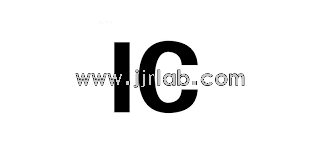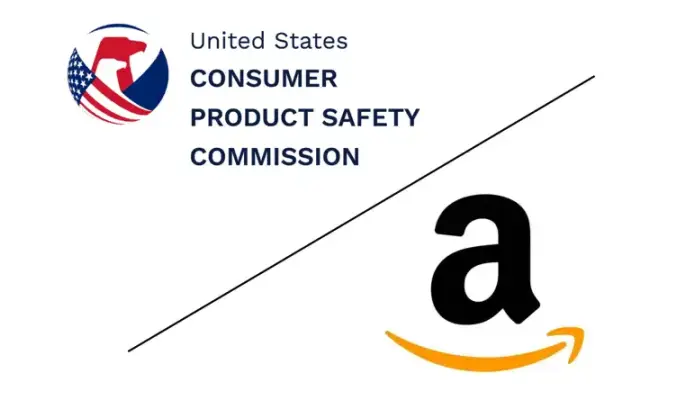
Wireless Product Export Certification for Various Countries
With the widespread adoption of wireless WIFI products and the Internet of Things, wireless products have added convenience to people's lives while also causing interference and radiation issues. Therefore, each country has mandatory or voluntary certification for wireless products.
1. China: srrc certification
China's wireless radio certification, also known as model approval certification, is required for radio transmission equipment sold in mainland China. The certification process involves testing, evaluation, and approval of the product. The certificate is issued by the Ministry of Industry and Information Technology (MIIT).
Application Materials for SRRC Certification:
1. Application form for radio transmission equipment model approval signed and stamped by the corporate legal representative.
2. Authorization letter for model approval signed and stamped by the corporate legal representative.
3. User manual, technical manual, circuit diagram, PCB layout, and placement diagram.
4. Description of RF line attenuation and antenna gain.
5. Driver and software (if computer control is needed, provide it).
6. Photos of the equipment (6 views, front and back of the main board without shielding cover, showing the applicant's name, device name, model, serial number, structure size, CMIIT ID).
7. Business license stamped and a company profile (production capacity, technical strength, quality control) stamped.
8. Copy of the quality management system certificate (ISO certificate), and annual production report of radio enterprises (not needed for Guangdong province and foreign companies).
SRRC Certification Process:
1. Provide materials and quote.
2. Sign the contract, provide materials, send samples (3 engineering prototypes + 1 finished product), and make payment.
3. Pre-test arranged by our company; if passed, send to SRRC designated laboratory for official testing.
4. Upon passing, conclude and issue the SRRC certificate.
Basic Information of SRRC Certification:
- Validity: 5 years
- Factory inspection required: No
2. European Union: CE certification (Directive CE-RED 2014/53/EU)
CE-RED certification is the EU's certification for wireless products, replacing the previous R&TTE directive. Products sold in the EU after June 13, 2017, must comply with the new RED 2014/53/EU directive.
Application Materials for CE-RED Certification:
1. User manual
2. Circuit diagram
3. Block diagram (module function diagram)
4. PCB layout
5. PCB placement diagram
6. Description of operation (explanation of the block diagram)
7. Bill of Materials (BOM LIST)
8. Label
9. Antenna specifications or antenna gain chart
10. Frequency setting software (software that keeps the transmission module transmitting at a certain frequency, generally required for BT and WIFI).
CE-RED Certification Process:
1. Provide materials and quote.
2. Sign the contract, provide materials, send samples, and make payment.
3. Testing arranged by our laboratory; if not passed, make rectifications.
4. Upon passing, conclude and issue the CE certificate and test report.
Basic Information of CE Certification:
- Validity: 5 years
- Factory inspection required: No
- Mandatory certification
3. United States: FCC DOC, fcc id Certification
FCC certification, issued by the Federal Communications Commission, ensures that wireless, electrical, and electronic products sold in the US do not interfere with other devices and do not harm human health. Products with wireless functions must apply for an FCC ID, while regular electronic devices apply for FCC SDOC.
Application Materials for FCC ID Certification:
1. FRN (FCC Registration Number): A 10-digit reference code issued by FCC CORES.
2. Grantee Code: A unique code issued after applying for the FRN number.
3. FCC ID number, product ID number (first three digits are the Grantee Code, the remaining 14 digits are self-assigned by the applicant).
4. FCC label indicating size, location on the product, and containing the FCC ID number and FCC warning.
5. Product description: A brief description of the product's functions, usage, and signal flow.
6. Block diagram indicating the frequency of the crystal oscillator.
7. Clear circuit diagram.
8. User manual.
9. Blank company letterhead.
10. Authorization letter.
11. Confidentiality letter (if needed).
FCC ID Certification Process:
1. Provide materials and quote.
2. Sign the contract, provide materials, send samples, and make payment.
3. Apply for FRN and Grantee Code.
4. Testing arranged by our laboratory; if not passed, make rectifications.
5. Upon passing, conclude and issue the FCC certificate and test report.
Basic Information of FCC Certification:
- Validity: Long-term
- Mandatory certification
- Wireless products must register an ID
4. Canada: ISED (IC ID) Certification
Previously known as ic certification, ised certification is now managed by Innovation, Science and Economic Development Canada. It is mandatory for electronic and electrical products entering the Canadian market.
Application Methods for IC Certification:
1. IC: Self-verification for IT-related products without RF functions.
2. IC ID: Company Number (CN, up to 6 digits) + Unique Product Number (UPN, up to 8 digits) for wireless RF products.
IC ID Certification Process:
1. Fill out the application form (provided by our company).
2. Provide product materials (user manual, circuit diagram, block diagram, working principle and function description, BOM list).
3. Provide quote.
4. Make payment and send samples for testing.
5. Testing arranged by our company.
6. Upon passing, submit materials to the authorized body for review.
7. Upon approval, issue the IC ID certificate.
Application Materials for IC ID Certification:
1. English user manual
2. Specifications
3. Circuit diagram
4. PCB layout
5. Block diagram
6. Business license
7. Organization code
8. Application form
9. Product photos
10. Samples
Basic Information of IC ID Certification:
- Local representative address required
- Label must include manufacturer name or trademark, model name, IC ID number
- Validity: Long-term
5. Brazil: anatel certification
ANATEL (AGêNCIA NACIONAL DE TELECOMUNICAES) is Brazil's National Telecommunications Agency responsible for the approval of telecommunications products. ANATEL certification is mandatory for telecom products and must comply with ANATEL rules and regulations.
ANATEL Certification Process:
1. Submit samples and materials to our company.
2. Send samples to a qualified laboratory for testing; upon completion, a test report is issued.
3. Submit the test report to the certification body for review and issuance of the CoC certificate.
4. ANATEL reviews documents and completes registration, allowing the product to be sold.
Application Materials for ANATEL Certification:
1. Information on the certification applicant.
2. Information on the manufacturer.
3. Information on the manufacturing factory.
4. User manual.
5. Product manual.
6. Technical specifications.
7. Internal and external product photos.
8. Test report.
9. Electrical scheme.
10. ISO9001 certification of the manufacturing factory (for Class I products or if there are multiple manufacturing factories).
Basic Information of ANATEL Certification:
- Voltage frequency: AC 127V-220V/60HZ
- Plug standard: ABNT NBR NM 60884-1:2004
- Mandatory: Yes
- Validity: Based on product category, 1 year/2 years/lifetime
- Factory inspection required: No (ISO9001 certificate needed for Class I products)
- Local representative required: Yes
6. Mexico: IFETEL Certification
Instituto Federal de Telecomunicaciones (IFT), also known as IFETEL, is responsible for the certification of telecommunication equipment in Mexico. IFETEL certification is mandatory for products that transmit or receive frequencies and telecom products connected to public networks.
IFETEL Certification Process:
1. Submit materials and samples to our company.
2. Local testing arranged by our laboratory.
3. Samples tested and a test report issued.
4. Submit the test report to the certification body for review and issuance of the IFETEL certificate.
Application Materials for IFETEL Certification:
1. Testing procedure.
2. Technical specifications.
3. Installation operation guide.
4. Cables, power supply, removable antenna, amplifier, and test software (2 samples).
Basic Information of IFETEL Certification:
- Mandatory: Yes
- Factory inspection required: No
- Local representative required: Yes
- Local testing required: Yes
- Validity: Long-term
7. Australia: rcm certification
The Regulatory Compliance Mark (RCM) indicates compliance with electrical safety and EMC regulations in Australia and New Zealand. Products must meet both electrical safety and EMC requirements to use the rcm mark.
RCM Certification Process:
1. Third-party laboratory evaluates the product and determines the testing standards.
2. If non-compliance is found, the laboratory will rectify the product to meet Australian standards.
3. Upon passing, a test report is issued.
4. Submit the test report to the certification body for review and issuance of the RCM certificate.
5. Register on the Australian website.
Application Materials for RCM Certification:
1. Product manual and specifications, circuit diagram.
2. BOM list, product model difference list.
3. Photos of additional models, 3 samples of the main test model.
4. Product application form.
Basic Information of RCM Certification:
- Validity: 5 years
- Non-mandatory
- RCM is a mark
8. India: WPC Certification
The Wireless Planning & Coordination Wing (WPC) regulates wireless products in India. Products using free frequency bands require ETA (Equipment Type Approval) certification, while others require a license. ETA and license holders must be locally registered companies.
WPC Certification Process:
1. Submit samples and materials to our company.
2. Submit CE RED report and related documents to WPC.
3. WPC reviews and issues the ETA certificate.
Application Materials for WPC Certification:
1. RF test report (EN 300 328 standard).
2. Product technical data sheet.
3. Authorization and agreement letter from foreign manufacturer.
Basic Information of WPC Certification:
- Mandatory: Yes
- Factory inspection required: No
- Sample testing required or provide CE RF report
- Local testing required: No
- Local representative required: Yes
- Certification cycle: 3-4 weeks
- Validity: Long-term
9. Japan: TELEC Certification
Japan's Radio Law requires type approval for designated radio equipment. TELEC (Telecom Engineering Center) is the primary certification body for wireless products.
TELEC Certification Process:
1. Provide materials and quote.
2. Sign the contract, provide materials, send samples, and make payment.
3. Testing arranged by our laboratory; if not passed, make rectifications.
4. Submit qualified report to the Japanese certification body.
5. Send electronic and paper certificates to the customer.
Application Materials for TELEC Certification:
1. Block diagram.
2. BOM list.
3. Product photos.
4. User manual.
5. Circuit diagram.
6. Key component PCB placement.
7. Front and back view of PCB board.
8. Quality management system declaration or ISO certificate.
Basic Information of TELEC Certification:
- Mandatory: Yes
- Factory inspection required: No (ISO certificate or recognized quality control documents needed)
- Validity: No expiration
- Certification cycle: Around 4 weeks
10. South Korea: KCC Certification
KCC (Korea Communications Commission) certification, previously known as mic certification, is required for IT, telecom, and RF wireless products. Products must undergo EMC, telecom, and RF testing.
KCC Certification Process:
1. Provide materials and quote.
2. Sign the contract, provide materials, send samples, and make payment.
3. Pre-testing arranged by our laboratory; if not passed, make rectifications.
4. Send samples to a Korean laboratory for testing.
5. Register and issue KCC certificate.
Application Materials for KCC Certification:
1. Application form.
2. Business license if the applicant is a Korean company.
3. Block diagram and circuit diagram.
4. Part list (including part placement).
5. Antenna gain chart and specifications.
6. Korean user manual.
7. PCB layout.
8. Operation program (installation operation program including non-modulation mode, modulation mode, standby mode, hopping mode if applicable).
9. 2 samples (one with the antenna exposed).
10. Technical document for error recognition if not supporting hopping or many channels.
Basic Information of KCC Certification:
- Mandatory: Yes
- Validity: Long-term
- Local representative required: No
11. Singapore: IMDA Certification
IMDA (Info-Communications Media Development Authority) certification is mandatory for wireless telecom products sold or used in Singapore. Products like Bluetooth, WiFi, and GSM require IMDA certification.
IMDA Certification Process:
1. Submit IMDA application.
2. Prepare materials.
3. Conduct sample testing.
4. Upon passing, issue the test report.
5. Apply for IMDA certificate.
6. Issue certificate.
Application Materials for IMDA Certification:
1. Application form.
2. Product specification.
3. English user manual.
4. RF test report.
5. RF-EMC test report.
6. EMC test report.
7. Safety test report.
8. Rating label.
9. NB certificate (for products with 2G, 3G, 4G function).
10. Manufacturer module declaration letter.
Basic Information of IMDA Certification:
- Mandatory: Yes
- Factory inspection required: No
- Local representative required: Yes
- Validity: 3 years
12. Taiwan: NCC Certification
NCC (National Communications Commission) is the regulatory body for telecommunication and information products in Taiwan. Products such as low-power equipment (LPE) and telecommunications terminal equipment (TTE) require NCC certification.
NCC Certification Process:
1. Provide materials and quote.
2. Sign the contract, provide materials, send samples, and make payment.
3. Testing arranged by our laboratory; if not passed, make rectifications.
4. Official testing, witnessed by the certification body.
5. Upon passing, issue the NCC certificate and test report.
Application Materials for NCC Certification:
1. Circuit diagram.
2. Block diagram.
3. Product specification.
4. User manual.
5. BOM list.
6. Service application form.
7. Factory ISO9001 certificate.
8. Antenna specifications.
9. Frequency setting software.
13. South Africa: ICASA Certification
ICASA (Independent Communications Authority of South Africa) certification is required for wireless communication equipment exported to South Africa. Testing can be done locally or in the exporting country.
ICASA Certification Process:
1. Prepare and submit documents including application form, compliance declaration, and clearance letter (LOA).
2. Contact the local office in South Africa.
3. Submit the permit application form to ICASA.
4. Pay the certification fee.
5. Obtain the type certification certificate.
Application Materials for ICASA Certification:
1. Color photos of the product.
2. Functional description of the device in block diagram form.
3. User manual.
4. RF, safety, and EMC reports.
5. Approved and stamped circuit diagram highlighting all revisions.
Each country has its unique certification requirements and processes, and obtaining the necessary certifications ensures compliance with local regulations and facilitates market entry.
Email:hello@jjrlab.com
Write your message here and send it to us
 Canada ISED Certification (IC Certification) Analy
Canada ISED Certification (IC Certification) Analy
 CSA C22.2 No.42 Compliance Test Report for Amazon
CSA C22.2 No.42 Compliance Test Report for Amazon
 FCM Food Contact Materials Compliance Certificatio
FCM Food Contact Materials Compliance Certificatio
 EN14350 Testing for Amazon Baby Feeding Products
EN14350 Testing for Amazon Baby Feeding Products
 Infant Support Pillow 16 CFR 1243/1242 & ASTM
Infant Support Pillow 16 CFR 1243/1242 & ASTM
 BRM Registration Card Under CFR Part 1130 Regulati
BRM Registration Card Under CFR Part 1130 Regulati
 How to get a D-U-N-S® Number for US FDA Registrati
How to get a D-U-N-S® Number for US FDA Registrati
 Household Massage Devices Compliance in the China
Household Massage Devices Compliance in the China
Leave us a message
24-hour online customer service at any time to respond, so that you worry!




